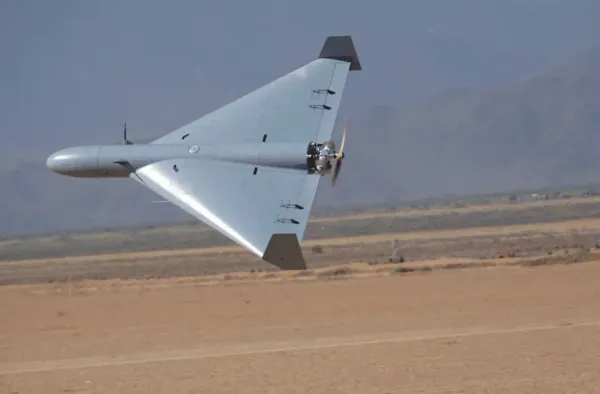Over the past fifty years, the growth and expansion of international non-governmental originations and cooperatives have expanded into every sector. This includes healthcare, sport, trade, and even travel.
Within this, governance structures and policing organizations have arisen, and have offered solidity and structure to the chaotic landscape. Although many nations have their own internal aviation governance authorities, two main ones stand apart from the rest and determine worldwide action. These are the International Civil Aviation Organization (ICAO) and the US Federal Aviation Administration (FAA). But what are these organizations and what do they do?

International Civil Aviation Organization (ICAO)
ICAO is a direct entity of the United Nations (UN) and provides aviation administration recommendations to 193 independent states worldwide. Created originally as the Convention on International Civil Aviation in 1944 (known as the Chicago Convention), the modern iteration was absorbed by the UN in 1947.
ICAO is headquartered in Montreal, Canada. The guiding philosophy of the organization is to create and distribute standards and protocols for fair and safe flight worldwide.
Set controls are listed by the agency, as well as being used as operational criteria for construction and use of aircraft. Other key tenants of the organization include passport control and regulation, as well as managing safe air traffic routes. ICAO remains the governing body of all state-based aviation authorities beyond domestic airspace.

Federal Aviation Administration (FAA)
The FAA is different that ICAO, as it is not an international collective, but rather a United States government agency under the guidance of the US Department of Transportation. The FAA, founded in 1958, was an autonomous US federal agency until being absorbed by DOT in 1967.
The FAA manages all air traffic and aviation services in the US and surrounding waters, as given authority by ICAO. Being US-based, the FAA sets all US flight standards for any aircraft entering or leaving US airspace. With US airspace subsiding over many ocean areas, large parts of the Pacific Ocean and parts of the North Pole are technically under US jurisdiction in the event of an air incident.
Additionally, the FAA has its own set of controls that all aircraft must observe, a list far denser than the standard ICAO operating procedures. It is important to note that the FAA and the Transportation Security Administration (TSA) may work hand in hand, however are not part of the same operational umbrella. In the event of any airline incident, the FAA is the preceding investigatory team.

With the introduction of the United States Space Force as well as the National Aeronautics and Space Administration (NASA), space-related incidents are typically not reviewed by the FAA and are subjected to the other administrations.
The reason aviation administrations are important is predominantly for standardization. With set rules and oversight, aviation logistics, security, and administration can be easier to manage. Additionally, as many judicial and legal proceedings follow aircraft incidents, international governance helps accountability for flight crews and operations.
GTF Storage Crisis Deepens: 835 Aircraft Grounded as Pratt & Whitney Recalls Surge Post-Mid-Year » JetBlue Opens First-Ever ‘BlueHouse’ Lounge at JFK Terminal 5 » The Top 5 Longest Flights in the World »
Comments (0)
Add Your Comment
SHARE
TAGS
INFORMATIONAL ICAOFAAUnited StatesUNNASATSA Airplane AviationRECENTLY PUBLISHED
 Ghost Networks: The Rise, Fall, and Revival of Fifth-Freedom Flights
Fifth-freedom flights — routes where an airline flies between two countries outside its home base — have always lived in aviation's twilight zone. We chart their rise, their near-disappearance, and the surprising markets where they still thrive today. Then we take you on board a special Seoul-Tokyo fifth-freedom flight to show how the experience stacks up against a typical regional carrier.
TRIP REPORTS
READ MORE »
Ghost Networks: The Rise, Fall, and Revival of Fifth-Freedom Flights
Fifth-freedom flights — routes where an airline flies between two countries outside its home base — have always lived in aviation's twilight zone. We chart their rise, their near-disappearance, and the surprising markets where they still thrive today. Then we take you on board a special Seoul-Tokyo fifth-freedom flight to show how the experience stacks up against a typical regional carrier.
TRIP REPORTS
READ MORE »
 US Air Force to Launch New Experimental One-Way Attack Drone Unit
In a move that signals a tectonic shift in American airpower, the U.S. Air Force is preparing to stand up its first-ever experimental unit dedicated solely to "One-Way Attack" (OWA) drones.
NEWS
READ MORE »
US Air Force to Launch New Experimental One-Way Attack Drone Unit
In a move that signals a tectonic shift in American airpower, the U.S. Air Force is preparing to stand up its first-ever experimental unit dedicated solely to "One-Way Attack" (OWA) drones.
NEWS
READ MORE »
 Pentagon Alarm: China’s ‘Tailless’ 6th-Gen Fighter Prototypes Are Already Airborne
The Pentagon’s annual 2025 China Military Power Report (CMPR), released this week, has sent a clear signal to Capitol Hill: the race for air dominance is no longer a one-horse race. For the first time, the U.S. Department of Defence has formally acknowledged the rapid progress of China’s sixth-generation fighter programs, highlighting the successful flight testing of multiple "novel tailless" stealth prototypes.
NEWS
READ MORE »
Pentagon Alarm: China’s ‘Tailless’ 6th-Gen Fighter Prototypes Are Already Airborne
The Pentagon’s annual 2025 China Military Power Report (CMPR), released this week, has sent a clear signal to Capitol Hill: the race for air dominance is no longer a one-horse race. For the first time, the U.S. Department of Defence has formally acknowledged the rapid progress of China’s sixth-generation fighter programs, highlighting the successful flight testing of multiple "novel tailless" stealth prototypes.
NEWS
READ MORE »



